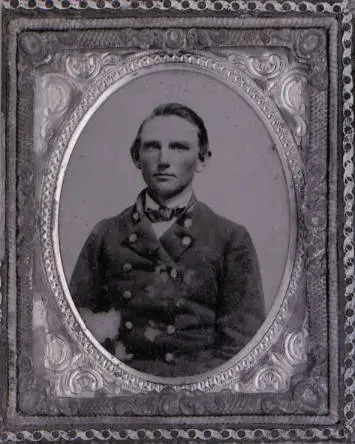Civil War Summer Reading — A Texas Tall Tale
Down here in Dallas, Texas we have forgotten what double digits temperatures feel like. Owing to the fact that the forecast has been and will continue to be in excess of 100 degrees for the foreseeable future, my border collie Moe and I have been spending our time indoors — watching golf, playing Zelda, and revisiting some old favorite books — including John W. Thomason, Jr.’s Lone Star Preacher. Originally published in 1941 by Charles Scribner’s Sons, Lone Star Preacher compiles several short stories about the Methodist preacher and sometime Confederate Soldier Praxiteles Swan, captain of the 5th Texas Regiment, Confederate States Provisional Army.

Born in 1893, the book’s author, John Thomason, Jr., served in the Marine Corps through both world wars. In the First World War he saw action at Belleau Wood and in the Muese-Argonne offensive. In World War II, he was chosen by admiral Chester Nimitz to serve as an inspector of Marine installations in the Pacific–a post that brought him to Guadalcanal during the intense fighting of the first major American offensive against the Japanese. The eldest of nine children born to John W. and Sue Hayes (Goree) Thomason, John Jr. also claimed a military relationship to the Civil War. His mother’s father was Thomas Jewett “T.J.” Goree, a Confederate veteran who served as an aide to James Longstreet, from Blackburn’s Ford to Appomattox.

ECW readers may recognize Thomason’s name — or perhaps even his distinctive style of illustrations from his 1930 biography of JEB Stuart. Assessing that work in 1969, historians Allan Nevins, Bell I. Wiley, and James I. Robertson, Jr., declared it “strongly sympathetic in tone.” Still, the distinguished panel judged it “fairly successful at capturing Stuart’s personality,” while lamenting that it “includes little on the larger struggle in which Stuart was engaged.” [1] It is no surprise that a work composed by the grandson of a Confederate veteran and published in 1930 should have a tinge of Lost Cause sentiment. Careful readers should be able to parse the work and find a good deal of value in Thomason’s ability to describe military figures and military life.
This ability, evident in his nonfiction, shone in Thomason’s fictional work–of which Lone Star Preacher is the best example. Historian Gary W. Gallagher notes that “few books evoke the military culture of the Army of Northern Virginia as effectively as this thoroughly engaging novel.” [2] In the way only a fictional character could, Swan encounters numerous Confederate luminaries in his Civil War career — and has thoughts on all of them, good and bad. Interestingly, however, Swan is noted to have “withheld his opinion on Longstreet” after the war. This may be Thomason’s nod to his grandfather’s relationship with Lee’s Old War Horse, as well as being a clever way to avoid embroiling himself in the Longstreet controversy that still raged furiously 70 years after the war. [3]
Revealing more of the books treasures would undoubtedly spoil the joy for those who seek it out. Worth noting, however, is the fact that in addition to writing the text, Thomason also supplied the illustrations for the volume. The author, in fact, may have left a greater legacy as an illustrator than as a writer. The sketches certainly add character and amusement to the text.

For those Texans, like me, currently suffering through the heat and humidity, the book also has a delightful tinge of Texana. While Swan spends most of the novel beyond the borders of the Lone Star State, his home at Washington-on-the-Brazos evokes a strong Texas connection. For me, the novel pairs well with the old folk ballad popularly known as the Texas River Song; and you can take your pick of versions between Townes and Lyle.
———————————————————————————————————-
[1] Allan Nevins, James I. Robertson Jr., and Bell I. Wiley, ed. Civil War Books: A Critical Bibliography, 2 vols. (Baton Rouge: Louisiana State University Press, 1967-1969), 2:94.
[2] Gary W. Gallagher, Nathaniel Cheairs Hughes, Jr., and Robert K. Krick, ed., In Taller Cotton: 200 More Important Confederate Books for the Reader, Researcher, and Collector (Wilmington, NC: Broadfoot Publishing, 2006), 67.
[3] John W. Thomason, Lone Star Preacher (New York: Charles Scribner’s Sons, 1941), 68.
Excellent post Cecily!
LONE STAR PREACHER is definitely well worth reading—as is Thomason’s WWI memoir FIX BAYONETS! WITH THE U.S. MARINE CORPS IN FRANCE, 1917-18 (1925), a vivid account enhanced even more by Thomason’s illustrations.
Yes indeed, Tracy!
Thank-you. I hope I can find it on “Forgotten Books.”
We had a cold day down here in San Antonio last week. It got down to 95!
Tom
Tom, I am envious!